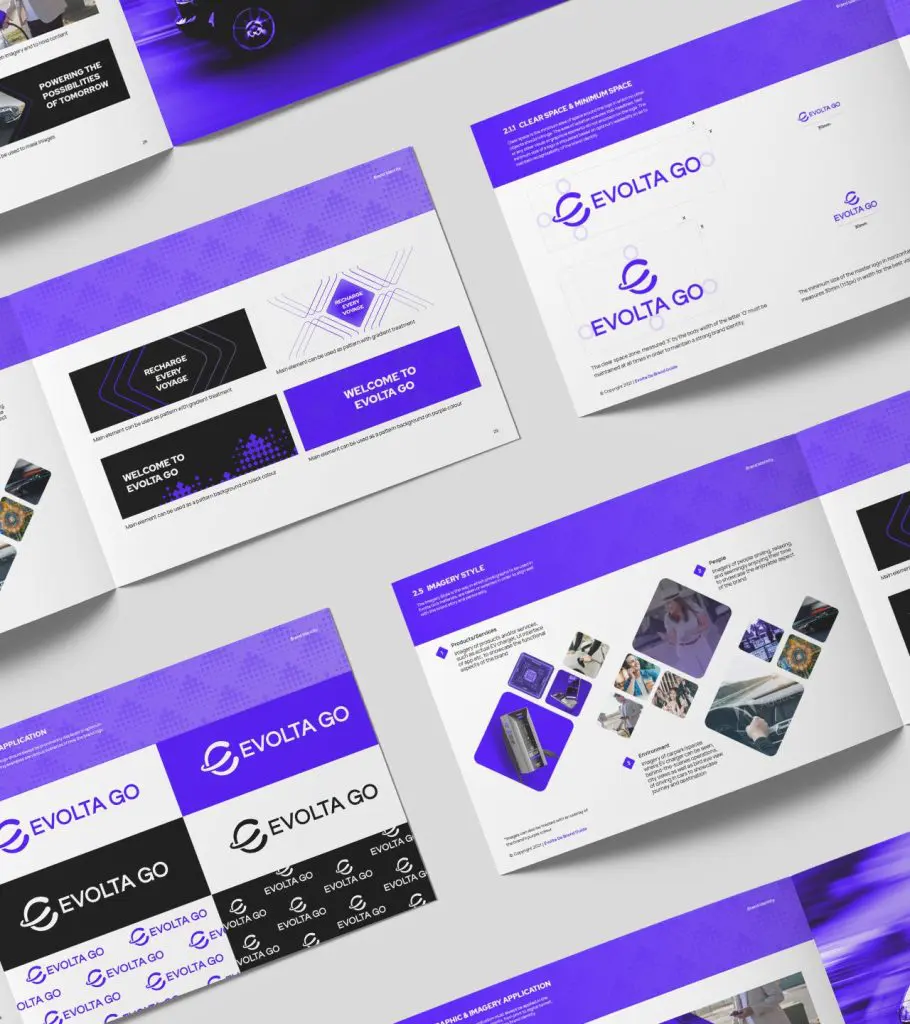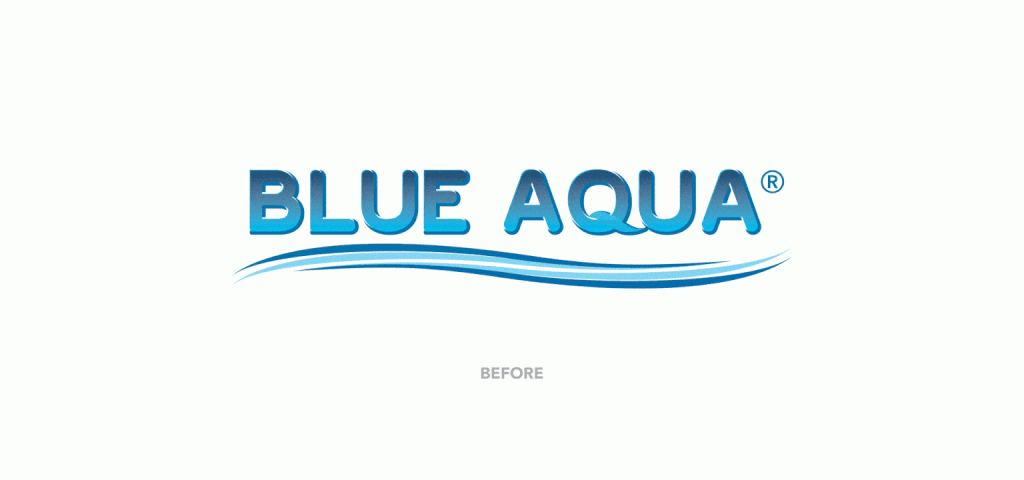Unveiling The Power of Brand Identity: Crafting A Lasting Impression
Unveiling The Power of Brand Identity: Crafting A Lasting Impression
In today’s fiercely competitive business landscape, standing out from the crowd has become more critical than ever. While products and services play a significant role, the true differentiator lies in the art of brand identity. It goes beyond tangible offerings, encapsulating the essence of your business and leaving a lasting brand impression on consumers. In this article, we delve into the power of brand identity and explore the various elements and strategies that contribute to crafting a compelling and enduring brand.
The Art of Brand Identity: Elevating Your Business Beyond Products
Understanding Your Brand Identity
Defining Brand Identity: Beyond Logos and Colors

The brand identity encompasses more than just a logo and a colour scheme. It is the representation of your brand’s personality, values, and purpose. It resonates with your target audience on an emotional level, creating a unique connection that extends beyond mere visuals. By understanding the multifaceted nature of brand identity, you can build a strong foundation for your brand’s success.
Building a Strong Brand Identity
Establishing a Foundation: Defining Your Brand’s Purpose and Values
To build a strong brand identity, it is crucial to define your brand’s purpose, mission, and core values. These elements serve as the guiding principles that shape your brand’s identity and help you resonate with your target audience authentically. By aligning your actions and communications with these foundational aspects, you can establish a consistent and meaningful brand identity.
Hallmarks of a Great Brand Identity
It communicates your brand position
Your brand identity must first and foremost communicate your brand position. As the visible manifestation of your brand position, it must bring out your brand’s essence, values and personality so your target audience can feel, see and understand what and who you are.
It is uniquely identifiable
It can be distinguished from your competitors so your brand does not get lost amongst the thousands of other brand messages consumers receive every day. Remember, our brains are hard-wired to identify what’s different, so it is okay to get creative with your brand identity.
It is simple to recognise
It is one thing to be creative, but another thing to be overly abstract. We are bombarded with brands every day, and this pun has been overwhelmed and kind of numbed us. We do not have the time or the attention span to pay attention anymore, especially in this very fast digital era. Therefore, brands must be creative yet simple enough for your target audience to recognise it. Simplicity also creates stronger brand recall, so whenever your customers think of your product category, they will remember you first.
It is aesthetically pleasing
A great brand identity is aesthetically pleasing. By that, we don’t just mean well-designed and beautiful to look at. The word ‘aesthetics’ comes from Greek, meaning ‘having to do with the senses’. Thus, when we say a brand identity is aesthetically-pleasing, it must be able to touch our emotions and convey positive feelings about your brand. To achieve that means blending the right mix of brand identity elements that allow us to experience the brand in a multi-dimensional and multi-sensorial manner.
It can be easily reproduced
Lastly, it should be easily reproduced and applied to different types of media and channels. In this digital age, a brand identity’s ability o flexibly transcend between the physical and digital media is more important than ever.
The Elements of Brand Identity: Unifying Visuals, Messaging, and Values

A brand identity is created by combining a set of brand elements in a consistent way to communicate what your brand stands for, including visual aesthetics, sending the right messages, consistent messaging, and shared values.
Visual Face: Designing a Memorable Logo and Visual Identity
The visual components, such as logos, graphics, taglines, typography, to colour palettes, create immediate recognition and association. We, humans, have the ability to understand complex thoughts through words and images. These elements should align with your brand’s core values and resonate with your target audience.
A visually appealing and memorable logo is a cornerstone of brand identity. It acts as the face of your brand, instantly recognizable and capable of conveying your brand’s essence. Crafting a logo and visual identity that encapsulates your brand’s values, personality, and uniqueness is a key aspect of establishing a strong brand identity. It is essential to consider factors such as simplicity, versatility, and relevance to ensure that your logo can stand the test of time and make a lasting impact on consumers.
Communicating the Essence: Crafting a Compelling Brand Story
A brand identity is also about sending the right message in the right context to the right audience. You may have the best of intentions, but if you send a wrong or mixed message, it may cause confusion among your customers and end up losing them. If your brand is positioned to be high-end, your customers should experience luxury. If your brand is positioned to be professional, it should convey you as an expert.
Other than sending the correct message. You also need to do consistent messaging. You need to ensure that your brand’s voice and tone remain coherent across all touchpoints, enhancing brand recognition and recall. Inconsistent messaging will result in confusion in your target market’s mind.
The power of storytelling cannot be underestimated in brand identity. A well-crafted brand story conveys your brand’s essence and connects with consumers on an emotional level. By sharing the narrative of your brand’s journey, values, and impact, you can establish a compelling brand identity that resonates with your target audience. The brand story serves as the backbone of your brand identity, providing a cohesive and authentic narrative that aligns with your values and attracts like-minded customers.
Delving Deeper: Emotional Connection of Brand Identity
A powerful brand identity evokes emotions and forges a deeper connection with consumers. By telling your brand’s story and providing memorable experiences, you can create an emotional bond that fosters loyalty and advocacy. Understanding and leveraging this emotional aspect of a brand is identity is key to cultivating a devoted customer base. When consumers connect with your brand on an emotional level, they are more likely to become brand advocates and loyal customers.
Use all 5 Senses to Engage Customers Further with Your Brand
How do we, as individuals, shape our perceptions when encountering something entirely new? Imagine someone places a dish of kangaroo meat on your dining table. Naturally, your initial reaction would involve looking at it (sight), perhaps listening to the waiter’s description of the dish (sound), smelling it, touching it to assess its texture, and ultimately tasting it. In essence, when encountering something unfamiliar, we often rely on all our senses to form an opinion.
This principle also applies to creating a comprehensive brand experience. By engaging multiple senses of customers, we can provide a complete sensory and emotional journey. Successful brands are increasingly integrating more than just visual and auditory elements into their branding strategies. Sensory branding has become an essential aspect when crafting brand identities. As people rely on all of their senses in their daily experiences, incorporating these senses into the branding journey can evoke positive emotional, cognitive, and behavioural responses.
Now how do you actively engage the five senses?
Sight
Sight, in the most obvious sense, is utilized by brand experts through visual elements such as colours, shapes, images, interior design, and lighting.
Sound
plays a significant role with commercial jingles, store or restaurant music, brand ambassador voices, slogans, and even the familiar tones that accompany device startups.
Smell
Although not as commonly employed, the smell is gaining popularity among physical establishments like stores, malls, hotels, and high-end hospitals, using scent diffusion systems to infuse pleasant aromas into the environment, thus enhancing brand recollection – and the overall customer experience.
Taste
The sense of taste, traditionally associated with the food and beverage industry, is also utilized by non-edible brands to enrich the brand experience. For instance, the cosmetic brand Lush incorporates product designs resembling appetizing treats, like chocolate ice cream, to appeal to their customers.
Touch
Lastly, touch is an essential aspect of the brand experience, as customers are allowed to physically interact with products before making a purchase. For a good example, popular online apparel store Zalora has established physical stores alongside its online presence, enabling customers to feel the texture of garments and try them on before deciding to buy.
Leveraging Brand Identity for Success
Building Trust and Loyalty: The Impact of Brand Identity on Consumer Perception
A strong brand identity plays a pivotal role in building trust and fostering customer loyalty. When consumers can consistently recognize and connect with your brand’s identity, it creates a sense of familiarity and reliability to use.
By aligning your brand identity with positive experiences and quality offerings, you can establish a strong foundation of trust and cultivate long-term customer relationships. A well-crafted brand identity builds credibility and authenticity, making consumers more likely to choose your brand over competitors.
Differentiation in a Crowded Market: How Brand Identity Sets You Apart
In a crowded marketplace, brand identity becomes the key to standing out and differentiating your business. A well-defined and distinctive brand identity showcases your unique value proposition and sets you apart from competitors. It helps consumers understand what makes your brand special and why they should choose you.
By highlighting your brand’s personality, values, and offerings, you can attract the attention and loyalty of your target audience, ultimately gaining a competitive edge. Sometimes the idea doesn’t need to be that great. It just needs to be different.
Case Study Example: Global Rebrand for Aqua Culture
As Blue Aqua has a diverse range of products across different sub-brands, there was a lack of proper breakdown of architecture, resulting in a disassociation between the parent and subsidiary brands.
Blue Aqua’s existing logos for both sub-brands and product levels did not cognate as a whole, leading to frequent confusion due to their dissimilarities in terms of association with the brand itself.
Blue Aqua does not have a coherent brand identity across its touchpoints, hence lacking consistency in communicating its brand and services.

With a clearly defined brand architecture, and position, new and existing customers will better associate the company’s services and offerings with the parent brand, Blue Aqua Group. At the same time, brand awareness will be raised as a whole.
The new logo adaptation helped to enhance the brand’s cohesiveness, making it better recognised and also further set themselves apart from similar brands in the market.
With its distinctive identity, Blue Aqua now adopts a bold and modern look which conveys the brand’s professionalism, making them stand out from the sea of competitors.
After the rebranding, Blue Aqua announced an SGD $ 8.8 million investment from Muscat Investment House to build the city state’s first high-tech rainbow trout farm.

Never, ever, copy your competitors.
Copying a competitor’s brand identity can be detrimental to your own brand for several reasons:
Lack of Differentiation:
By copying your competitor’s brand identity, you miss the opportunity to differentiate yourself in the market. A brand identity that is strong should be unique and reflective of your brand’s values, personality, and offerings. Copying your competitor’s identity sends a message of imitation rather than innovation, making it difficult for consumers to distinguish between the two brands.
Brand Confusion:
If your brand identity closely resembles that of a competitor, it can lead to confusion among consumers. They may associate your brand with competitors or struggle to differentiate between them. This can undermine your brand’s credibility and make it challenging to build a distinct identity in the minds of consumers. Not only causing confusion, copying another brand will also dilute the trust and loyalty you have established with them.
Lack of Authenticity:
Authenticity is a crucial element of a successful brand. When you copy a competitor’s brand identity, you compromise your brand’s authenticity. Consumers appreciate and connect with brands that are genuine, transparent, and true to their values. A copied brand identity can come across as inauthentic and undermine trust.
Legal Issues:
Copying a competitor’s brand identity can potentially lead the company to legal issues, including trademark infringement. Intellectual property laws protect unique brand identities, and using a similar identity can result in legal consequences, damage to your brand’s reputation, and financial implications.
Missed Opportunity for Innovation:
Developing your own unique brand identity allows you to showcase your creativity and innovation. It gives you the freedom to explore new ideas, design elements, and messaging that resonate specifically with your target audience. By copying your competitor, you miss the chance to develop a brand identity that sets you apart and captures the attention of your customers.
Weakened Positioning and Market Share:
Brand identity plays a crucial role in positioning your brand in the market. A distinct and well-crafted brand identity helps create a strong brand image, attract the right audience, and gain market share. By copying your competitor’s brand identity, you missed the opportunity to position your brand uniquely, potentially resulting in a weaker market presence and reduced competitive advantage.
It’s important to invest time and effort into developing an original and authentic brand identity that accurately represents your brand’s values, purpose, and offerings. This allows you to stand out in the market, connect with your target audience, and build a strong and memorable brand.
The Power of Brand Guidelines: Ensuring Consistency Across Channels
Consistency across all touchpoints is essential in building a strong brand identity. It is important to maintain a cohesive brand experience across all touchpoints. Every interaction a consumer has with your brand should align with your brand’s values, tone, and visual elements. Consistency creates a sense of trust and reliability, allowing consumers to recognize and connect with your brand across different channels and experiences. Whether it’s your website, social media presence, packaging, or customer service, maintaining a cohesive brand experience reinforces your brand identity. It helps build a strong brand image in the minds of consumers.
To maintain consistency, you are going to need a Brand Guideline. Brand guidelines serve as a roadmap for maintaining consistency in your brand identity. They provide clear instructions on logo usage, colour palettes, typography, and brand voice, ensuring that all marketing materials and communications align seamlessly. By adhering to these guidelines, you can ensure that your brand is represented consistently across various channels and platforms. Brand guidelines also serve as a reference for internal teams, agencies, and partners, ensuring that everyone involved in promoting your brand understands and respects its identity.
Evolving with Purpose: Adapting Brand Identity in a Changing Landscape
Extending Brand Identity: Expanding into New Markets and Products
As your business grows, there may be opportunities to expand into new markets or introduce new products. In these instances, extending your brand identity becomes crucial. While maintaining consistency, it is essential to adapt your brand identity to resonate with the specific needs and cultural nuances of different markets. This may involve conducting market research, understanding local preferences, and tailoring your messaging and visuals accordingly. By carefully strategizing and implementing brand extensions, you can leverage your existing brand identity while catering to new audiences and product lines, expanding your brand’s reach and relevance. By means, as time goes by, you may need to do rebranding as well. Check this out to make sure when you need a rebrand.
Brand identity should not remain static. It must adapt and evolve with the changing market dynamics and consumer preferences. Regularly assessing and reassessing your brand identity allows you to stay relevant and ensure that it continues to resonate with your target audience. This doesn’t mean completely changing your brand identity every time there’s a trend or shift in the market. Instead, it involves strategic refinement and adaptation while staying true to your brand’s core values and essence. By embracing change while maintaining consistency, you can navigate shifts in the market with agility and purpose.
Case Study Example: Rebranding Shots Bar
Chupitos had an inconsistent brand identity back then, which made it difficult for Chupitos to stand out amongst its competitors in the market.
Moreover, partygoers perceive Chupitos as a young bar, thus limiting their ability to reach out to a wider and more mature target audience.
Another challenge is the previous brand identity portrays Chupitos as a drinking venue, which is unsuitable for a day-to-night concept restaurant bar.

Chupitos’s newly adopted brand identity effectively differentiates itself from its competitors, creating a stronger brand recall and impression in its market.
The brand’s graphic style evoked a fun and cheeky vibe that aligns with the brand’s tagline, “Go Wild For A While”
The revamped on its space and environmental graphics highlight the experiential aspect of Chupitos, thereby making Chupitos a vibrant and fun space for exciting nightlife.

The Everlasting Impression: The Power and Potential of Brand Identity
Brand identity is a powerful tool that goes beyond mere visuals and colours. It encapsulates the essence of your brand, leaving a lasting impression on consumers. By understanding the key elements of brand identity and implementing effective strategies, you can elevate your business, foster customer loyalty, and drive sustainable success. Building and maintaining a strong brand identity is an ongoing process that requires continuous nurturing, evaluation, and adaptation. By investing in your brand identity and embracing its potential for growth, you can cultivate a resilient and enduring brand that leaves a significant impact on consumers and achieves long-term success.
In today’s fiercely competitive business landscape, standing out from the crowd has become more critical than ever. While products and services play a significant role, the true differentiator lies in the art of brand identity. It goes beyond tangible offerings, encapsulating the essence of your business and leaving a lasting brand impression on consumers. In this article, we delve into the power of brand identity and explore the various elements and strategies that contribute to crafting a compelling and enduring brand.
The Art of Brand Identity: Elevating Your Business Beyond Products
Understanding Your Brand Identity
Defining Brand Identity: Beyond Logos and Colors

The brand identity encompasses more than just a logo and a colour scheme. It is the representation of your brand’s personality, values, and purpose. It resonates with your target audience on an emotional level, creating a unique connection that extends beyond mere visuals. By understanding the multifaceted nature of brand identity, you can build a strong foundation for your brand’s success.
Building a Strong Brand Identity
Establishing a Foundation: Defining Your Brand’s Purpose and Values
To build a strong brand identity, it is crucial to define your brand’s purpose, mission, and core values. These elements serve as the guiding principles that shape your brand’s identity and help you resonate with your target audience authentically. By aligning your actions and communications with these foundational aspects, you can establish a consistent and meaningful brand identity.
Hallmarks of a Great Brand Identity
It communicates your brand position
Your brand identity must first and foremost communicate your brand position. As the visible manifestation of your brand position, it must bring out your brand’s essence, values and personality so your target audience can feel, see and understand what and who you are.
It is uniquely identifiable
It can be distinguished from your competitors so your brand does not get lost amongst the thousands of other brand messages consumers receive every day. Remember, our brains are hard-wired to identify what’s different, so it is okay to get creative with your brand identity.
It is simple to recognise
It is one thing to be creative, but another thing to be overly abstract. We are bombarded with brands every day, and this pun has been overwhelmed and kind of numbed us. We do not have the time or the attention span to pay attention anymore, especially in this very fast digital era. Therefore, brands must be creative yet simple enough for your target audience to recognise it. Simplicity also creates stronger brand recall, so whenever your customers think of your product category, they will remember you first.
It is aesthetically pleasing
A great brand identity is aesthetically pleasing. By that, we don’t just mean well-designed and beautiful to look at. The word ‘aesthetics’ comes from Greek, meaning ‘having to do with the senses’. Thus, when we say a brand identity is aesthetically-pleasing, it must be able to touch our emotions and convey positive feelings about your brand. To achieve that means blending the right mix of brand identity elements that allow us to experience the brand in a multi-dimensional and multi-sensorial manner.
It can be easily reproduced
Lastly, it should be easily reproduced and applied to different types of media and channels. In this digital age, a brand identity’s ability o flexibly transcend between the physical and digital media is more important than ever.
The Elements of Brand Identity: Unifying Visuals, Messaging, and Values

A brand identity is created by combining a set of brand elements in a consistent way to communicate what your brand stands for, including visual aesthetics, sending the right messages, consistent messaging, and shared values.
Visual Face: Designing a Memorable Logo and Visual Identity
The visual components, such as logos, graphics, taglines, typography, to colour palettes, create immediate recognition and association. We, humans, have the ability to understand complex thoughts through words and images. These elements should align with your brand’s core values and resonate with your target audience.
A visually appealing and memorable logo is a cornerstone of brand identity. It acts as the face of your brand, instantly recognizable and capable of conveying your brand’s essence. Crafting a logo and visual identity that encapsulates your brand’s values, personality, and uniqueness is a key aspect of establishing a strong brand identity. It is essential to consider factors such as simplicity, versatility, and relevance to ensure that your logo can stand the test of time and make a lasting impact on consumers.
Communicating the Essence: Crafting a Compelling Brand Story
A brand identity is also about sending the right message in the right context to the right audience. You may have the best of intentions, but if you send a wrong or mixed message, it may cause confusion among your customers and end up losing them. If your brand is positioned to be high-end, your customers should experience luxury. If your brand is positioned to be professional, it should convey you as an expert.
Other than sending the correct message. You also need to do consistent messaging. You need to ensure that your brand’s voice and tone remain coherent across all touchpoints, enhancing brand recognition and recall. Inconsistent messaging will result in confusion in your target market’s mind.
The power of storytelling cannot be underestimated in brand identity. A well-crafted brand story conveys your brand’s essence and connects with consumers on an emotional level. By sharing the narrative of your brand’s journey, values, and impact, you can establish a compelling brand identity that resonates with your target audience. The brand story serves as the backbone of your brand identity, providing a cohesive and authentic narrative that aligns with your values and attracts like-minded customers.
Delving Deeper: Emotional Connection of Brand Identity
A powerful brand identity evokes emotions and forges a deeper connection with consumers. By telling your brand’s story and providing memorable experiences, you can create an emotional bond that fosters loyalty and advocacy. Understanding and leveraging this emotional aspect of a brand is identity is key to cultivating a devoted customer base. When consumers connect with your brand on an emotional level, they are more likely to become brand advocates and loyal customers.
Use all 5 Senses to Engage Customers Further with Your Brand
How do we, as individuals, shape our perceptions when encountering something entirely new? Imagine someone places a dish of kangaroo meat on your dining table. Naturally, your initial reaction would involve looking at it (sight), perhaps listening to the waiter’s description of the dish (sound), smelling it, touching it to assess its texture, and ultimately tasting it. In essence, when encountering something unfamiliar, we often rely on all our senses to form an opinion.
This principle also applies to creating a comprehensive brand experience. By engaging multiple senses of customers, we can provide a complete sensory and emotional journey. Successful brands are increasingly integrating more than just visual and auditory elements into their branding strategies. Sensory branding has become an essential aspect when crafting brand identities. As people rely on all of their senses in their daily experiences, incorporating these senses into the branding journey can evoke positive emotional, cognitive, and behavioural responses.
Now how do you actively engage the five senses?
Sight
Sight, in the most obvious sense, is utilized by brand experts through visual elements such as colours, shapes, images, interior design, and lighting.
Sound
plays a significant role with commercial jingles, store or restaurant music, brand ambassador voices, slogans, and even the familiar tones that accompany device startups.
Smell
Although not as commonly employed, the smell is gaining popularity among physical establishments like stores, malls, hotels, and high-end hospitals, using scent diffusion systems to infuse pleasant aromas into the environment, thus enhancing brand recollection – and the overall customer experience.
Taste
The sense of taste, traditionally associated with the food and beverage industry, is also utilized by non-edible brands to enrich the brand experience. For instance, the cosmetic brand Lush incorporates product designs resembling appetizing treats, like chocolate ice cream, to appeal to their customers.
Touch
Lastly, touch is an essential aspect of the brand experience, as customers are allowed to physically interact with products before making a purchase. For a good example, popular online apparel store Zalora has established physical stores alongside its online presence, enabling customers to feel the texture of garments and try them on before deciding to buy.
Leveraging Brand Identity for Success
Building Trust and Loyalty: The Impact of Brand Identity on Consumer Perception
A strong brand identity plays a pivotal role in building trust and fostering customer loyalty. When consumers can consistently recognize and connect with your brand’s identity, it creates a sense of familiarity and reliability to use.
By aligning your brand identity with positive experiences and quality offerings, you can establish a strong foundation of trust and cultivate long-term customer relationships. A well-crafted brand identity builds credibility and authenticity, making consumers more likely to choose your brand over competitors.
Differentiation in a Crowded Market: How Brand Identity Sets You Apart
In a crowded marketplace, brand identity becomes the key to standing out and differentiating your business. A well-defined and distinctive brand identity showcases your unique value proposition and sets you apart from competitors. It helps consumers understand what makes your brand special and why they should choose you.
By highlighting your brand’s personality, values, and offerings, you can attract the attention and loyalty of your target audience, ultimately gaining a competitive edge. Sometimes the idea doesn’t need to be that great. It just needs to be different.
Case Study Example: Global Rebrand for Aqua Culture
As Blue Aqua has a diverse range of products across different sub-brands, there was a lack of proper breakdown of architecture, resulting in a disassociation between the parent and subsidiary brands.
Blue Aqua’s existing logos for both sub-brands and product levels did not cognate as a whole, leading to frequent confusion due to their dissimilarities in terms of association with the brand itself.
Blue Aqua does not have a coherent brand identity across its touchpoints, hence lacking consistency in communicating its brand and services.

With a clearly defined brand architecture, and position, new and existing customers will better associate the company’s services and offerings with the parent brand, Blue Aqua Group. At the same time, brand awareness will be raised as a whole.
The new logo adaptation helped to enhance the brand’s cohesiveness, making it better recognised and also further set themselves apart from similar brands in the market.
With its distinctive identity, Blue Aqua now adopts a bold and modern look which conveys the brand’s professionalism, making them stand out from the sea of competitors.
After the rebranding, Blue Aqua announced an SGD $ 8.8 million investment from Muscat Investment House to build the city state’s first high-tech rainbow trout farm.

Never, ever, copy your competitors.
Copying a competitor’s brand identity can be detrimental to your own brand for several reasons:
Lack of Differentiation:
By copying your competitor’s brand identity, you miss the opportunity to differentiate yourself in the market. A brand identity that is strong should be unique and reflective of your brand’s values, personality, and offerings. Copying your competitor’s identity sends a message of imitation rather than innovation, making it difficult for consumers to distinguish between the two brands.
Brand Confusion:
If your brand identity closely resembles that of a competitor, it can lead to confusion among consumers. They may associate your brand with competitors or struggle to differentiate between them. This can undermine your brand’s credibility and make it challenging to build a distinct identity in the minds of consumers. Not only causing confusion, copying another brand will also dilute the trust and loyalty you have established with them.
Lack of Authenticity:
Authenticity is a crucial element of a successful brand. When you copy a competitor’s brand identity, you compromise your brand’s authenticity. Consumers appreciate and connect with brands that are genuine, transparent, and true to their values. A copied brand identity can come across as inauthentic and undermine trust.
Legal Issues:
Copying a competitor’s brand identity can potentially lead the company to legal issues, including trademark infringement. Intellectual property laws protect unique brand identities, and using a similar identity can result in legal consequences, damage to your brand’s reputation, and financial implications.
Missed Opportunity for Innovation:
Developing your own unique brand identity allows you to showcase your creativity and innovation. It gives you the freedom to explore new ideas, design elements, and messaging that resonate specifically with your target audience. By copying your competitor, you miss the chance to develop a brand identity that sets you apart and captures the attention of your customers.
Weakened Positioning and Market Share:
Brand identity plays a crucial role in positioning your brand in the market. A distinct and well-crafted brand identity helps create a strong brand image, attract the right audience, and gain market share. By copying your competitor’s brand identity, you missed the opportunity to position your brand uniquely, potentially resulting in a weaker market presence and reduced competitive advantage.
It’s important to invest time and effort into developing an original and authentic brand identity that accurately represents your brand’s values, purpose, and offerings. This allows you to stand out in the market, connect with your target audience, and build a strong and memorable brand.
The Power of Brand Guidelines: Ensuring Consistency Across Channels
Consistency across all touchpoints is essential in building a strong brand identity. It is important to maintain a cohesive brand experience across all touchpoints. Every interaction a consumer has with your brand should align with your brand’s values, tone, and visual elements. Consistency creates a sense of trust and reliability, allowing consumers to recognize and connect with your brand across different channels and experiences. Whether it’s your website, social media presence, packaging, or customer service, maintaining a cohesive brand experience reinforces your brand identity. It helps build a strong brand image in the minds of consumers.
To maintain consistency, you are going to need a Brand Guideline. Brand guidelines serve as a roadmap for maintaining consistency in your brand identity. They provide clear instructions on logo usage, colour palettes, typography, and brand voice, ensuring that all marketing materials and communications align seamlessly. By adhering to these guidelines, you can ensure that your brand is represented consistently across various channels and platforms. Brand guidelines also serve as a reference for internal teams, agencies, and partners, ensuring that everyone involved in promoting your brand understands and respects its identity.
Evolving with Purpose: Adapting Brand Identity in a Changing Landscape
Extending Brand Identity: Expanding into New Markets and Products
As your business grows, there may be opportunities to expand into new markets or introduce new products. In these instances, extending your brand identity becomes crucial. While maintaining consistency, it is essential to adapt your brand identity to resonate with the specific needs and cultural nuances of different markets. This may involve conducting market research, understanding local preferences, and tailoring your messaging and visuals accordingly. By carefully strategizing and implementing brand extensions, you can leverage your existing brand identity while catering to new audiences and product lines, expanding your brand’s reach and relevance. By means, as time goes by, you may need to do rebranding as well. Check this out to make sure when you need a rebrand.
Brand identity should not remain static. It must adapt and evolve with the changing market dynamics and consumer preferences. Regularly assessing and reassessing your brand identity allows you to stay relevant and ensure that it continues to resonate with your target audience. This doesn’t mean completely changing your brand identity every time there’s a trend or shift in the market. Instead, it involves strategic refinement and adaptation while staying true to your brand’s core values and essence. By embracing change while maintaining consistency, you can navigate shifts in the market with agility and purpose.
Case Study Example: Rebranding Shots Bar
Chupitos had an inconsistent brand identity back then, which made it difficult for Chupitos to stand out amongst its competitors in the market.
Moreover, partygoers perceive Chupitos as a young bar, thus limiting their ability to reach out to a wider and more mature target audience.
Another challenge is the previous brand identity portrays Chupitos as a drinking venue, which is unsuitable for a day-to-night concept restaurant bar.

Chupitos’s newly adopted brand identity effectively differentiates itself from its competitors, creating a stronger brand recall and impression in its market.
The brand’s graphic style evoked a fun and cheeky vibe that aligns with the brand’s tagline, “Go Wild For A While”
The revamped on its space and environmental graphics highlight the experiential aspect of Chupitos, thereby making Chupitos a vibrant and fun space for exciting nightlife.

The Everlasting Impression: The Power and Potential of Brand Identity
Brand identity is a powerful tool that goes beyond mere visuals and colours. It encapsulates the essence of your brand, leaving a lasting impression on consumers. By understanding the key elements of brand identity and implementing effective strategies, you can elevate your business, foster customer loyalty, and drive sustainable success. Building and maintaining a strong brand identity is an ongoing process that requires continuous nurturing, evaluation, and adaptation. By investing in your brand identity and embracing its potential for growth, you can cultivate a resilient and enduring brand that leaves a significant impact on consumers and achieves long-term success.
YOU MIGHT ALSO LIKE

Best Creative Agencies Singapore to Partner with in 2024
- Branding
- All
- Business Design
- UI/UX Design
- Packaging Design
- Communication Design
- Product Design

Profesi UX Writer: Tugas, Keterampilan, dan Peluang Karier
- Topics
- Branding
- Marketing
- Language





















 Singapore
Singapore  Indonesia
Indonesia  Italy
Italy